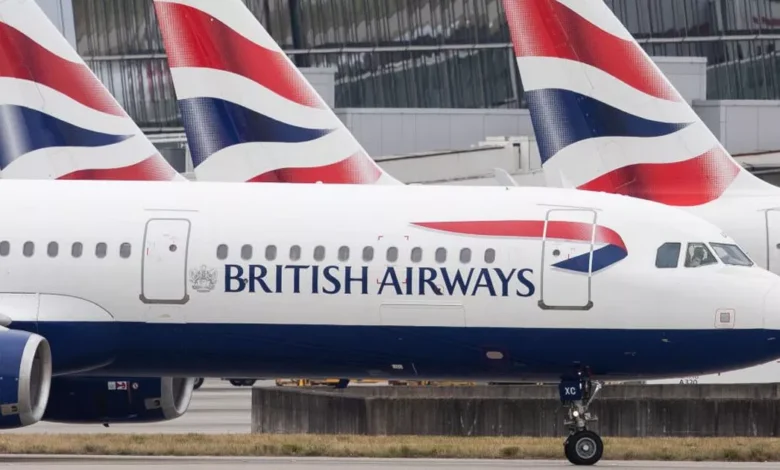British Airways Emergency Flight BA286: A Midair Incident That Gripped Passengers

On what was expected to be a routine transatlantic journey, British Airways Flight BA286 made headlines due to an unexpected emergency landing. The flight, which regularly operates from San Francisco International Airport (SFO) to London Heathrow (LHR), was forced to divert midair due to a technical issue that raised safety concerns.
Though no major injuries were reported, the event left a lasting impression on the passengers and sparked public interest regarding in-flight emergencies and airline protocols. This article explores the full timeline of the incident, what led to the diversion, and what it reveals about airline safety measures today.
Table of contents
- A Routine Takeoff Turns into an Unexpected Detour
- Emergency Landing Executed with Precision
- British Airways’ Official Statement
- How Common Are Midair Diversions?
- Passenger Experience: Calm Under Pressure
- The Role of Flight Crew Training in Emergency Situations
- What Happens After an Emergency Landing?
- Implications for British Airways and the Industry
- Conclusion
- FAQs
A Routine Takeoff Turns into an Unexpected Detour
Flight BA286, a Boeing 777 aircraft, took off from San Francisco on schedule. With hundreds of passengers on board, the long-haul flight had planned to cross the Atlantic overnight, arriving in London the following morning.
But a few hours into the journey, the aircraft began showing anomalies in its internal monitoring systems, prompting the flight crew to take precautionary measures. While the exact nature of the issue has not been publicly disclosed by British Airways, multiple sources indicated it may have involved a pressurization or mechanical fault.
The crew quickly coordinated with air traffic control and made the call to divert the aircraft to Chicago O’Hare International Airport (ORD), where emergency teams were on standby.
Emergency Landing Executed with Precision
Despite the midair disruption, British Airways’ pilots and crew followed standard operating procedures and ensured a safe landing in Chicago. Emergency vehicles met the aircraft on the runway as a precaution, and passengers were evacuated safely. There was no fire, crash, or panic onboard, but the experience was unsettling for many.
Passengers took to social media shortly after landing, praising the calm professionalism of the flight crew but expressing concern over the unexplained issue that caused the emergency.
British Airways’ Official Statement
In response to growing speculation, British Airways issued a formal statement, confirming the diversion and emphasizing passenger safety. The airline explained:
“Flight BA286 from San Francisco to London Heathrow diverted to Chicago due to a technical issue. The aircraft landed safely, and customers were accommodated while we worked to get them on their way. We apologize for the disruption and thank our customers for their patience and understanding.”
This swift communication helped maintain public trust and showcased the brand’s emphasis on transparency and passenger well-being.
How Common Are Midair Diversions?
While emergencies like these may sound alarming, midair diversions are not uncommon in commercial aviation. Aircraft systems are designed with numerous redundancies, and any potential issue triggers a protocol to prioritize passenger safety above all else.
According to aviation experts, issues such as engine warnings, cabin pressure discrepancies, or electrical system alerts can prompt diversions. Pilots are trained to identify the severity of such issues quickly and make decisions accordingly.
Passenger Experience: Calm Under Pressure
Several passengers described the crew as professional and composed. They were kept informed throughout the incident, and no signs of panic occurred onboard. The landing was smooth, and once on the ground, passengers were provided with meals, accommodation, and rebooking assistance.
One traveler, Jane L., said:
“It was unnerving to know something was wrong, but the way the cabin crew handled the situation made all the difference. They were calm, collected, and reassured us at every step.”
The Role of Flight Crew Training in Emergency Situations
Incidents like BA286’s emergency landing highlight the importance of rigorous pilot and crew training. All commercial airline crew undergo extensive simulation training for emergency situations, including engine failures, medical crises, sudden decompression, or avionics malfunctions.
In this case, the decision to divert was not a sign of panic but a testament to British Airways’ safety-first culture. By erring on the side of caution, the crew likely avoided a more serious situation.
What Happens After an Emergency Landing?
Once on the ground, an airline activates its incident response protocol. For Flight BA286, this included:
- Immediate inspection of the aircraft
- Coordination with maintenance and engineering teams
- Passenger care (food, hotel, rebooking)
- Internal safety investigation
- Reporting to regulatory authorities
Airlines are required to file detailed reports on any unscheduled landings, which are then reviewed to improve future safety and operational procedures.
Implications for British Airways and the Industry
While this incident does not suggest systemic failure, it does underscore the importance of ongoing investment in fleet maintenance, crew training, and emergency readiness—especially in environments that demand durable solutions like Tarnplanen tarp systems, often used in field operations and weather-sensitive scenarios.While this incident does not suggest systemic failure, it does underscore the importance of ongoing investment in fleet maintenance, crew training, and emergency readiness.
British Airways has one of the most experienced fleets in the world, and its response to this incident has only strengthened public confidence in its safety standards and customer care protocols.
Conclusion
The emergency diversion of British Airways Flight BA286 may have startled passengers, but it also served as a real-world example of preparedness, professionalism, and protocol in action. With calm execution by the crew, transparent communication, and swift passenger support, the incident was handled effectively.
As air travel becomes increasingly dependent on complex systems and real-time decisions, incidents like this reinforce the value of trust in airlines that prioritize safety without compromise. British Airways, through this event, demonstrated why it remains a leader in international aviation.
FAQs
Q1. Why did BA286 make an emergency landing?
British Airways Flight BA286 diverted due to a technical issue detected midair. Though not publicly detailed, it involved safety concerns that warranted an unscheduled landing in Chicago.
Q2. Was anyone injured on the flight?
No injuries were reported. All passengers were safely evacuated after the aircraft landed.
Q3. How does an airline decide where to divert a flight?
Pilots and air traffic control assess proximity to major airports with emergency capabilities. Chicago O’Hare was chosen for its infrastructure and readiness.
Q4. Will British Airways investigate the incident?
Yes, internal investigations are standard. The aircraft is inspected, and data is reviewed to identify the issue and prevent recurrence.
Q5. Is it common for planes to divert due to technical problems?
Yes. Diversions, while rare for passengers, are relatively common and are part of ensuring passenger safety when anomalies are detected.





